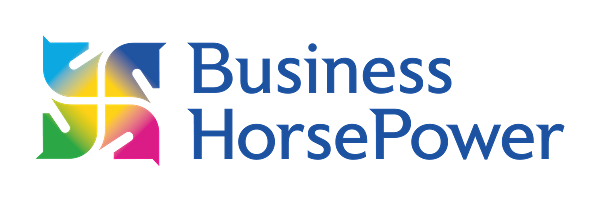
by Julia Felton | Aug 30, 2015
As the speed of change continues to dominate our lives, and the news is littered by stories of trouble and turmoil it is easy to forget that each of us has the ability to decide how we respond to these events.
Emotions peak and ebb constantly amid a bombardment of choices. Uncertainty is growing about our direction and the future.
Despite the stress and chaos caused by climate change, economic instability and global insecurity, people are coming together. Hope and a positive momentum are building among the future caretakers of humanity and our planet. These people are what I call the Joined Up Leaders of the future
Hope is driven by the qualities of the heart: appreciation, happiness, care, compassion, etc. These qualities are strengthened by:
• Spiritual practices like meditation, prayer and coherence-building techniques.
• Heart connections with others and caring relationships within and outside our families.
• Frequent gathering with friends and loved ones
Great leaders are masters at demonstrating the traits of being Joined Up and living from the heart. Some the practices they adopt include:
• Genuinely appreciating everything and increasing heartfelt positive emotions.
• Generating positive feelings before, during and after activities and encounters to increase the texture and richness of life experiences.
• Practice care for yourself and others.
• Guard against negative projections about themselves, someone else or the future.
• Be objective about issues that arise, as if they are someone else’s. Focus on the heart area and breathe in a positive feeling or attitude. Listen to their heart for solutions.
Interestingly, practising these activities also leads to coherence. Among the characteristics of psycho-physiological coherence are smooth heart-rhythm patterns, greater heart-brain synchronization for improved cognitive ability, and efficient, harmonious functioning of cardiovascular, nervous, hormonal and immune systems.
So what is Coherence?. The Institute of HeartMath define coherence as: 
“Feelings of genuine hope, appreciation, care and compassion signal your heart to send harmonious and coherent signals to the brain/mind, replacing feelings of separation with connection. The heart and brain align, and your electromagnetic field sends out a coherence wave, locally and globally. Higher cortical functions are enhanced, enabling greater objectivity and intuitive perception”
as opposed to incoherence which is:
“Stress, overwhelm, anxiety, uncertainty and fear send chaotic and incoherent signals to the brain/mind, inhibiting higher cortical functions and trigger stressful responses. The heart and brain are no longer in sync and solutions to personal and global problems elude us. Negative emotions register in your magnetic field, generating an incoherence wave”
And guess what, I always notice that my clients become more coherent in the presence of the horses. (And to prove this I have recently started using the HeartMath emWave and Inner Balance applications to help confirm this). There is just something about the energy of the horses and the connection that people experience that unlocks their heart and makes them open to these emotions of hope and possibility. This is why it is not unusual for people to cry during the experience, as they get deeply connected to their true authentic self. The part of us that often, especially in a corporate environment, we hide and leave at the door. And yet this is the part of us that others want to see and that effortlessly enables us to develop connection and relationship to build our business.
So if you’d like to get connected and find your true authentic self, then give me a call and I’ll book you in for an appointment with the horses.
PS. Want to learn more about how to Build Relationships To Build Your Business?. Then come and hear me speak at the THRIVE conference on 24th September
(Article inspired by the Institute of Heart Math, Tips for Heart Based Living)

by Julia Felton | Aug 12, 2015
My coach recently introduced me to the concept of systems not goals and it is making such a difference in my life that I wanted to share this article with you which has been inspired by James Clear.
We all have things that we want to achieve in our lives — getting into the better shape, building a successful business, raising a wonderful family, writing a best-selling book, winning a championship, and so on.
And for most of us, the path to those things starts by setting a specific, measurable actionable goal. For example I would set goals on how much income I wanted to make a month, how many times I wanted to work out, how much food I wanted to eat. But there was a problem. When I failed to meet this goal I became disillusioned and rather than the goal motivating me it was infact putting me into inaction. I never wanted to set goals in case I did not achieve them. I started avoiding goal setting and planning as it was too painful to see the results. And as a result my business lost focus, direction and momentum.
What I’m starting to realize, however, is that when it comes to actually getting things done and making progress in the areas that are important to you, there is a much better way to do things.
It all comes down to the difference between goals and systems.
Let me explain.
The Difference Between Goals and Systems
What’s the difference between goals and systems?
- If you’re a coach, your goal is to win a championship. Your system is what your team does at practice each day.
- If you’re a writer, your goal is to write a book. Your system is the writing schedule that you follow each week.
- If you’re a runner, your goal is to run a marathon. Your system is your training schedule for the month.
- If you’re an entrepreneur, your goal is to build a million dollar business. Your system is your sales and marketing process.
Now for the really interesting question:
If you completely ignored your goals and focused only on your system, would you still get results?
For example, if you were a basketball coach and you ignored your goal to win a championship and focused only on what your team does at practice each day, would you still get results?
I think you would.
For example, if you committed to write two blogs per week over the course of a year you would have written over 100,000 words. The typical book is about 50,000 to 60,000 words, so by this habit of writing twice a week within a year you would have completed enough content for two books.
All of this is such a surprise because goal was never set for the writing. Progress wasn’t measured in relation to some benchmark. What there was a focus on was writing two articles every week. And after sticking to that schedule for a year the result was 100,000 words. If you focus on the system and the process of doing the work, in the end, you might experience better results results.
Let’s talk about three more reasons why you should focus on systems instead of goals.
1. Goals reduce your current happiness.
When you’re working toward a goal, you are essentially saying, “I’m not good enough yet, but I will be when I reach my goal.”
The problem with this mindset is that you’re teaching yourself to always put happiness and success off until the next milestone is achieved. “Once I reach my goal, then I’ll be happy. Once I achieve my goal, then I’ll be successful.”
SOLUTION: Commit to a process, not a goal.
Choosing a goal puts a huge burden on your shoulders. Can you imagine if I had made it my goal to write two books this year? Just writing that sentence stresses me out.
But we do this to ourselves all the time. We place unnecessary stress on ourselves to lose weight or to succeed in business or to write a best-selling novel. Instead, you can keep things simple and reduce stress by focusing on the daily process and sticking to your schedule, rather than worrying about the big, life-changing goals.
When you focus on the practice instead of the performance, you can enjoy the present moment and improve at the same time.
2. Goals are strangely at odds with long-term progress.
You might think your goal will keep you motivated over the long-term, but that’s not always true.
Consider someone training for a half-marathon. Many people will work hard for months, but as soon as they finish the race, they stop training. Their goal was to finish the half-marathon and now that they have completed it, that goal is no longer there to motivate them. When all of your hard work is focused on a particular goal, what is left to push you forward after you achieve it?
This can create a type of “yo-yo effect” where people go back and forth from working on a goal to not working on one. This type of cycle makes it difficult to build upon your progress for the long-term.
SOLUTION: Release the need for immediate results.
I was training at the gym last week and I was doing my second-to-last set of clean and jerks. When I hit that rep, I felt a small twinge in my leg. It wasn’t painful or an injury, just a sign of fatigue near the end of my workout. For a minute or two, I thought about doing my final set. Then, I reminded myself that I plan to do this for the rest of my life and decided to call it a day.
In a situation like the one above, a goal-based mentality will tell you to finish the workout and reach your goal. After all, if you set a goal and you don’t reach it, then you feel like a failure.
But with a systems-based mentality, I had no trouble moving on. Systems-based thinking is never about hitting a particular number, it’s about sticking to the process and not missing workouts.
Of course, I know that if I never miss a workout, then I will lift bigger weights in the long-run. And that’s why systems are more valuable than goals. Goals are about the short-term result. Systems are about the long-term process. In the end, process always wins.
3. Goals suggest that you can control things that you have no control over.
You can’t predict the future. (I know, shocking.)
But every time we set a goal, we try to do it. We try to plan out where we will be and when we will make it there. We try to predict how quickly we can make progress, even though we have no idea what circumstances or situations will arise along the way.
SOLUTION: Build feedback loops.
Business intelligence dash boards give you great feedback on how you are doing. They can create continual feedback loops enabling you to course correct. They help you know if you are staying on track and let you know if the system is working. If we are to keep our business on track it is imperative that we measure the key business indicators and then use this information to help us course correct.
So I encourage you to Fall In Love With Systems
Goals are good for planning your progress and systems are good for actually making progress.
Goals can provide direction and even push you forward in the short-term, but eventually a well-designed system will always win. Having a system is what matters. Committing to the process is what makes the difference.

by Julia Felton | Aug 4, 2015
“Values are not what we want, but something intrinsic which you absolutely need in your life in order to be true to yourself.” – Cherry Claus
The term authentic leadership has been around for a while and a key starting point for any leader to be truly authentic is to know what your values are. Our values are in essence our internal compass or GPS and give us clues to our internal standards and measures. They are what we hold dear and are what’s important to us and are therefore pivotal in what motivates us. Yet so many people are unconscious of their values.
When we are clear about our values we can make decisions more clearly and often faster, understand what motivates us and when we are being true to our values we will be more energised.
So what is a value?
Think of your values as a GPS – when you wander off the path or lose direction, they bring you back on track. Values are something we naturally move towards or away from, they are the things we are willing to spend energy on. They are largely unconscious and drive your true purpose. They provide the push, or motivation to take action and serve as an evaluation criteria, or judgement about our actions. They are the way we judge good or bad, right and wrong, appropriateness or inappropriateness.
When you are fully clear on your values, you attract to yourself people of like mind who share the same desire to lead a purposeful, authentic life.
- Our values or perhaps the ‘personal rules’ which we choose to live by, influence our emotions and behaviours, and have an enormous impact on what we do and what we say.
- Values are the supporting framework for our beliefs and are strongly connected to our identity.
- Our primary principles and way of life are controlled by our values.
- They furnish us with direction and motivation to accomplish tasks or challenge situations.
- Our values impact every angle of our lives and the lives of those we interact with.
- Values are what give meaning to our lives.
- Values are closely linked to our vision, of what’s possible, or what we can become.
- Values stimulate our vision of what we want.
We organise our values hierarchically, so those higher up the hierarchy we search for first in terms of decision-making, evaluating etc. Once the higher values have been satisfied those lower down the hierarchy are then satisfied. It’s not automatic that once you have fulfilled the higher values those lower down are satisfied.
Values also determine our behaviour. Someone with a values hierarchy of adventure, family happiness, health, pleasure, and wisdom will handle a situation very differently from someone with a values hierarchy of order, loyalty, freedom, achievement and friendship.
How do I know when I’m not living my values?
If you are not living by your values you are likely to be unhappy, and if you don’t know what your values are you won’t be able to pinpoint exactly why you are not happy.
If someone violates one of your values you will also feel a degree of discomfort, hurt, annoyed or angry and it won’t always be obvious why you feel this way.
If you have set goals in the past which you firmly believed you were capable of achieving, and yet you haven’t achieved them, it’s very possible that the goals may have not been congruent with your values.
If you have not yet identified what your values are at work, what is important to you about the work you do, give me a call and I’ll start you on the journey to elicit your values.

by Julia Felton | Jul 7, 2015
“If a cluttered desk signs a cluttered mind, of what, then, is an empty desk a sign?” Albert Einstein
Whilst some of you might argue that it represents an empty mind I would counter-argue that an empty or tidy desk represents an organised mind. One where everything has a place. And when everything is organised you can save time. Organisation gives you focus.
A recent survey by Brother International interviewed about 800 office workers and the findings estimated that 76 hours per year or nearly two work weeks per person are lost searching for items around the office or on the computer. Three out of ten people admit to losing a file folder a year and one out of four lost a mobile phone, a calculator and/or a flash memory drive.
Staggering, what a massive waste of time. Imagine what else you could do with this time instead. So how do you get started.
1) Set aside 10 mins a day for a week each and every day
2) Collect all the clutter together
3) Put all the stuff you have never looked at in boxes
4) If you’ve not looked at the stuff in months either dump it or decide what you want to do with it
5) With things you want to save (or might need again) make a decision to work through that pile over the next week.
6) Put everything else away, find a space in your office for it
7) Make all your desk area clean and then keep it that way
8) Create a system for tidying your desk each evening before you close down
9) Finally plan the next day activities so you have no opportunity for procrastination
10) Just do it and get into action
So get going now and start tidying up your desk. You’ll be amazed at the clarity you experience from having a decluttered environment.
And if you continually struggle with focus chances are you are struggling with Entrepreneurial Attention Deficit Disorder (EADD). So why not join my Facebook group and check out the 5 day masterclass I ran on STOP Faffing, START Focusing

by Julia Felton | Jul 1, 2015
“We can build our leadership upon fear, obligation, or trust. However, only a foundation of trust results in the collaboration and goodwill necessary to achieve our peak performance.”
These words, from organizational design expert Roger Allen, could hardly be more succinct in expressing the central role that trust plays in building and leading high-performance organizations. What is also very apparent to me is that this same principle holds true in developing relationships with my horses. Sure I could intimidate my horse, or force him, but in my experience this might simply get short term gains. Developing a meaningful relationship means that we need to invest in developing trust. It’s not the quick fix that many of us are looking for nowadays but the rewards are truly worth it.
With the integrity of our business leaders under such a microscope these days, it’s valuable to take a moment for a refresher on trust in leadership. For integrity, though critical to trust, isn’t the only element of a trust-based management style. According to Seattle-based management expert Stephen Robbins, trust is based on four other distinct elements in your relationship with the people you lead:
- Competence. At first this may seem strange—after all, can’t incompetent people be trusted? Of course, but not if you want to lead. Leaders are held to a different standard, and part of what your team trusts is that you know what you’re doing. It comes with the territory.
- Consistency. This is one of the most pragmatic elements of trust. If your team knows what you stand for, then they will believe that you will react in a predictable way to certain situations. Over time your consistently expressed values become the shared values of the team. Some charismatic leaders may purposely act unpredictably to “shake things up,” and they may well be wildly successful. But they won’t necessarily be trusted.
- Loyalty. To a certain extent, your team can only trust you to the degree you are committed to their success and well-being. Max De Pree, the legendary CEO of Herman Miller and champion of the “servant leader” concept, puts it this way: “The leader’s first job is to define reality. The last is to say thank you. In between the leader must become a servant and a debtor.” This servant/debtor relationship to your team is one that strongly conveys your loyalty to them.
- Openness. Trust is ultimately the characteristic of a relationship, and it is through its relationship with you that your team expresses its trust. Openness is a cornerstone of the ability to build these relationships. If your team can’t get to know you, then they probably can’t get to trust you, either. With openness comes the requirement for a certain vulnerability: in this arena, you will generally have to “go first” by reaching out and creating such relationships.
By investing in building and strengthening these qualities in your leadership, you will be steadily reinforcing your trust relationship with the people who work for you. Those relationships, in turn, become the foundation for building a high-performance organization, particularly in times of change and stress, when people tend to rely upon their personal relationships. If your team trusts you in good times, they are even more likely to stand with you when the times turn challenging.
If you are interested in learning how to develop trust in your organisation to drive business performance then please connect with me to schedule an Unleash Your Profit Potential Strategy Session.

by Julia Felton | Jun 24, 2015
As a fellow entrepreneur I understand that you went into business because you just love what you do. I bet you are super creative and loved the excitement and buzz of starting your own company. With loads of ideas and energy you were just what the business needed at that time. But, assuming your business has been a success, are you still the right person to be running the business. Maybe it is time to fire yourself?
So why do I say that? Well time and time again I come across successful entrepreneurs still trying to run their business as a start up when in fact it is an established business and leading it requires a very different skill set.
Just as each year goes through the five seasons and has a natural rhythm to it so does your business. Businesses follow cycles as illustrated in the Five Energy Dynamic below, which is why it is rare to find the same companies being the best performers, year on year.
 When a business is just starting out it needs lots of Wood Energy for creating the vision and coming up with the strategy. Wood energy is Spring type energy, it gets things moving. Then the business moves into a phase of growth, represented by Summer and Fire energy. Here you find companies acquiring market share and presence by connecting and collaborating with others.
When a business is just starting out it needs lots of Wood Energy for creating the vision and coming up with the strategy. Wood energy is Spring type energy, it gets things moving. Then the business moves into a phase of growth, represented by Summer and Fire energy. Here you find companies acquiring market share and presence by connecting and collaborating with others.
Then business moves into the late summer phase represented by Earth energy and consultation. This is a time ,when a business established in their niche, needs to focus on looking after customers. Then the business moves into autumn (Metal energy) which is all about consolidation and calculation – getting more from the business by closely monitoring the numbers. Then the business moves into Winter and Water energy. At this point the business typically reflects back on what has and hasn’t worked. It begins to look for ways to expand its product offering with product extensions and so the business moves back into creation mode and the Spring energy. It’s a virtuous circle
So what season is your business in? The best way to figure this out is to examine which season you have just passed through. If you have a great product that has proven itself in the market, you are out of Spring and into Summer, where you will be focusing on building your market.
If you have many new customers and sales are coming in easily, you are out of Summer and into late Summer focusing on serving your customers well. If your customers are happy and your team members are settled, you are out of late Summer and into Autumn, where your focus will be on analyzing and measuring how the business performed and then you move into Winter where you will reflect on what occurred and seek ways to enhance performance before moving back into Spring
The big error that many business owners make is that because they fail to realize when they have moved from one season to the next, they keep adopting the same old strategies when a new approach is needed. Oftentimes the wrong type of leader is running the business in the wrong season and when this occurs the results can be disastrous.
So, I urge you to honestly look at your business and consider whether you are the right person to be leading the business through this phase of its development. And if not, be brave, swallow your pride, and fire yourself from the CEO role because the consequences could be dire for your business if you don’t.

by Julia Felton | Jun 5, 2015
Recently this great information was shared with me and it was so powerful that I wanted to share it with you too because it talks to a subject that comes up with my clients time and time again. And that topic is customer follow up.
I think these statistics will shock and surprise you. So get ready:
- 48% of sales people never follow up with a prospect
This is of course shocking but not surprising. I know from my own experience how often I have expressed an interest in a product/service and then no-one has followed up with me. This is especially frustrating when I want to buy!
So why would you start a business and not follow up an incoming enquiry?????
So we continue:
- 25% of sales people make a second contact and stop
- 12% of sales people make more than three contacts
and so why is this. Well it is often that little voice in your head that says:
- “I don’t want to hassle them”
- “If they want it they will buy”
Well it seems they won’t….please read on for the most surprising stats of all…
- 2% of sales are made on the first contact
- 3% of sales are made on the second contact
- 5% of sales are made on the third contact
- 10% of sales are made on the fourth contact
- 80% of sales are made on the fifth to twelfth contact!!!
Just look at the jump between the fourth and fifth contacts.
So my friends persistence is the key to your success. I learnt this lesson the hard way from my financial adviser. I actually wanted his services but I was just way to busy to complete the paperwork. Consistently for about 10 months Nigel called me every month. Because I knew I needed his services I never found his call annoying or aggressive. I was in fact glad that he had reached out to me and reminded me of what I needed to do.
Today we are bombarded with information. We are in information overwhelm. But that does not mean someone doesn’t want your products and services. It might be, like me, it isn’t a priority right now as they are fire fighting something else. Staying connected to your prospects is key to converting them eventually. Sometimes it might feel to you like you are annoying them but rest assured this is rarely the case. In fact many are so happy to hear from you. And if you aren’t sure well just ask your prospect. Get permission to follow up with them in x days or months. Trust me it is so much easier to make those calls when you have got permission to follow up.
So go forth and make calls because the money truly is in the follow up.

by Julia Felton | May 20, 2015
Have you:
- Ever paid for training you never used?
- Bought books you never read?
- How about coaching you never implemented?
- Got a stack of “shelf” rather than “self” development programmes and books on your shelf?
Unfortunately this is not a rare thing–it’s rumoured that 80% of coaching clients don’t implement what they learn. I have nothing but compassion for these people because I used to be one of them. I foolishly believed that going on courses was the answer to all my problems. If I just learnt more my business would soar and clients would be attracted to me.
What I didn’t know at the time was that some deeply ingrained fears and childhood programming was preventing me from implementing what I knew I had to do. It was my mindset that was holding me back. It took investing in over 100 programmes to realise this (now that’s a lot of cash! and I don’t want you to have to go through that pain).
Initially, I’d blame the program, other times I’d blame the coach. They didn’t understand me. My business was different. But the truth of it is that I was afraid to address the inner work I needed to do. I hoped that throwing money at and buying more resources would make my fears go away, but it never did. Things only changed when I started facing my fears and doing the inner work.
Here are some ways that we avoid facing the fear:
Throwing Money At Things
Spending time creating a new website, posting on social media or just hiding out behind your computer will not help you bust through the fears stopping you becoming visible and connecting with others. So often my clients say to me that I’ll just connect with them once my website is complete. I used this strategy very effectively for years – and as some of you will know I had multiple websites to keep me busy – but this never works or helps you attract clients. Only by getting out and speaking to potential prospects can you expect your business to grow.
Throwing Money At People
Coaches and consultants are great and I am never without a coach. They can tell you what’s happening, point out patterns in you that you can’t see and give you clarity around what to do next. However, NONE of them can put a gun to your head and actually make you do the thing that makes you cringe or hide under the table. Eventually, you will have to be doing it by yourself and reconcile with your fears and demons. As I constantly tell my clients, you are 100% responsible for your results-good AND bad.
Throwing Money At Events
If you are not willing to be a different person, to act differently than what you’ve always done, what’s the point of spending money to go to networking or training events to grow your business? Buying a ticket and sitting in a seat doesn’t mean you can tick off the marketing plan ‘to do’ list. Are you trying to give advice, connections and friendliness at strangers? Are you willing to help people who look lost and alone? Do you follow up with every single person you were fortunate enough to meet? If you’re not, just stop throwing money at events in the hopes that they’ll grow your business.
Having well and truly busted myself on this, I really help that I have helped you realise that spending money on things without taking ACTION is NOT going to change your life. The only way things will change is to feel uncomfortable, step out of your comfort zone, feel the fear and take action. In fact my best advice would be to use the fear to fuel your action rather than quash it.

by Julia Felton | May 11, 2015
If leaders are to be successful they need to be able to influence and impact others. But what is impact and how is it created. My definition of personal impact is ‘The ability to command your audience, aligning your physiology and emotions to create the impact you intend.’ If you are able to do this it will automatically affect the tone of voice you use.
Why Physiology and Emotions?
In my workshops I often refer to the Mehrabian model on the impact of communication where 55% of what we communicate is through our physiology or our body language. This can be anything from facial expression, the way you stand or sit and breathing. It’s not about size, height or physical beauty. 38% of what we communicate is through tone of voice, which includes volume, timbre, speed, rhythm and the energy behind it.
Both tone and physiology are affected by our emotions. If you are fearful, happy, stressed it will show in both and people unconsciously read these. This leaves 7% of the impact in the words you use. It’s important to recognise that all 3 elements are significant and have to be aligned. Saying you are happy when your voice tone and body are clearly saying something different gives an incongruous message, as you are not being authentic and people immediacy recognise this. Admittedly sometimes this acknowledgement is not even conscious. When others experience us as inauthentic and incongruent it makes them wary of us as they are not sure what to expect and in a sales situation people will not buy from you.
So how do you create an impact?
The best way to create the impact you desire is firstly to be clear on what impact you want to create. This mean being authentic and having clarity on the outcome you want. Being laid back is great if that is the impact you want to create but this might not be the right approach if you want people to listen to your message and remember it.
Remember you create an impact from the moment you walk in a room or someone sees/hears you for the first time. Here are some simple steps you can begin to practice to create the impact you desire.
- Ask yourself – what is my intention in the meeting? What result do I want? What atmosphere do I want to create? Having got clarity on this;
- Ask yourself – how do I need to be to create/deliver this? What do I need to embody? Visualise how you will be walking into the room and interacting with others
- As you do this go through a basic centring practice:
- Stand with your feet hip width apart, balanced equally on each foot with your knees relaxed.
- Lift your rib cage slightly and relax your shoulders so you stand tall yet relaxed.
- Lift you head a look straight ahead, relaxing your jaw in the process.
- Now, if your breath hasn’t already shifted breath into your abdomen.
- Notice the shift in your body and your breath and the energy you need to create and project.
- If possible practice how you need to be.
Now, after the event reflect:
- Did you create the impact you wanted?
- If yes what did you learn that you can repeat or do more of?
- If not what did you notice about how you were? When did you ‘lose it?’
- What do you need to practice to do better next time?
- If possible get feedback.
In my experience the times I fail to make the impact I desired occur when I stop being authentic and try to be someone else. When I lack authenticity it becomes difficult to connect with the other person and communication channels become blurred. One of the best teachers I have ever come across when it comes to learning how to create an impact and be authentic are my horses. They never fail to give me honest feedback.
So if you are interested in developing your authentic communication skills I invite you to join me for the upcoming Art of Authentic Communication Workshop where my herd of horses will be your teachers.

by Julia Felton | May 5, 2015
Our brains are hard-wired to do the opposite of listening unconditionally— listen for quick judgements. Our hunter-gatherer ancestors who could make quick determinations between the rustling of grass or a tiger survived. Those that wandered around, taking it all in, became lunch.
Our world today is different, and we are less likely to take creative risks or share with someone that we feel has passed judgement on us. According to Judith Glaser, author of Conversational Intelligence, the main purposes of listening are to judge, to reject or to connect. People determine if they are being judged or connected to in .07 seconds. How do you feel when you sense you’re being judged? How creative are you? Are you good at solving problems? Do you feel inspired? Thoughtful? Or do you want to find the safest answer as fast as you can in order to get out of the conversation?
If you listen unconditionally, that means that you are going into the conversation with the primary purpose of connecting, not deciding if you are going to accept or reject what the other person is talking about. Regardless of what the other says, you are coming from a place of curiosity. Nothing said will faze you. Next time you have a conversation, whether with a client, family member or coworker, rather than start with your thoughts, ask the other person for theirs. Continue to ask open-ended questions and just… listen. Do not analyze, do not plan, do not start making any choices. Then ask another open-ended question. If you’re stuck, one way to practice coming up with questions is using the click-down tool. Find the key word or phrase that would be blue and underlined if the conversation was transcribed on a webpage, and ask an open-ended question about it.
Listening unconditionally is not easy, but it is not impossible. In fact, the more you practice it the more natural it will become. So I challenge you. See how many conversations you can have in the next week where you only ask questions. You will find that you talk less and hear a lot more. In fact, you may even be inspired.
If you want to develop your listening skills then I invite you to join us at the Art of Authentic Communication Workshop being held as part of International Coaching Week.















